In 2023, VoIP-based phone systems accounted for over 62% of global enterprise telephony deployments, yet 43% of those organizations reported at least one telephony-related security incident, according to IBM’s X-Force Threat Intelligence Index. The shift to hybrid voice infrastructure, blending internet-based communication with legacy PBX systems, has expanded the attack surface far beyond traditional IT concerns. And right in the middle of this shift sits Direct Inward Dialing (DID).
DID allows external callers to reach internal extensions directly, bypassing human operators or automated IVRs. It’s a cornerstone of modern enterprise communication, especially in distributed or remote-first environments. But what makes DID indispensable for user experience also makes it uniquely exposed to threat vectors that cut across VoIP, SIP trunking, and PBX configurations. And unlike broader network security, which typically falls under the IT domain, DID exists in a gray zone between telecom and information security, often managed without unified oversight or standardized protections.
That ambiguity is a gift to attackers. Weak SIP authentication, unsecured call forwarding, legacy PBX interfaces, and unmonitored direct lines are just a few of the points where threat actors can gain entry. And once inside, voice-based breaches are rarely detected in real-time. The average time to discover telecom fraud? Nearly 27 days, according to the Communications Fraud Control Association.
The problem isn’t just technical. It’s organizational. DID security demands more than firewalls and call encryption, it requires a systemic, cross-functional approach that spans infrastructure, user behavior, and vendor accountability. This article breaks down the most dangerous DID-specific threats you’re likely underestimating, and offers clear strategies to detect, mitigate, and prevent them, before they drain budgets or compromise trust.
Let’s start by understanding why DID has become such an attractive and increasingly exploited target.
Key Takeaways
- DID systems are increasingly targeted by attackers due to weak SIP configurations, unmonitored call forwarding, and outdated PBX infrastructure, often overlooked by IT security teams.
- Major threats include toll fraud, SIP credential stuffing, TDoS attacks, PBX backdoors, and voice phishing (vishing), each capable of causing operational disruption and major financial loss.
- Defending against these threats requires proactive monitoring of call behavior, hardening SIP and PBX gateways, enforcing MFA, and training staff to detect social engineering tactics.
- Relying solely on DID providers for fraud protection is risky, internal controls, traffic baselines, and anomaly detection are essential for rapid threat response.
- Long-term DID security depends on cross-functional collaboration between IT, telecom, and security teams, with regular audits, red team testing, and provider evaluations embedded in process.
Most Dangerous DID-Specific Threats You’re Likely Underestimating
Security gaps in Direct Inward Dialing don’t announce themselves. Most threats stay buried deep in configuration layers, until attackers find them first. While many organizations secure their data networks and email systems, DID remains one of the least monitored, least understood vectors. The consequences are anything but minor. Telecom fraud cost enterprises $39.89 billion globally in 2023, with over 50% of that loss attributed to voice channel vulnerabilities, including those linked to SIP, PBX, and DID exposure.
What makes these threats particularly dangerous isn’t just their technical complexity, it’s the speed at which they escalate and the operational blind spots they exploit. Here’s a prioritized breakdown of the most urgent and often-overlooked vulnerabilities that specifically affect DID systems.
SIP Trunking Exposure and Credential Stuffing
DID systems depend heavily on SIP trunks to handle call routing between internal endpoints and the public network. The issue? Most SIP implementations prioritize connectivity over security by default. That often means open ports, weak or reused credentials, and minimal logging.
Attackers take full advantage of this. Using SIP scanning bots and brute-force tools like SIPVicious, they target internet-facing SIP gateways to test credential combinations and probe for misconfigured endpoints. Once authenticated, they can re-route calls, intercept audio streams, or register rogue devices to the DID system—often without triggering alarms.
Common signs of a SIP-based breach include:
- Frequent SIP registration failures from unfamiliar IPs
- Sudden traffic spikes on non-office hours
- Repeated INVITE requests with varying headers
Every one of those could signal an attempt to hijack access to your telephony backbone. And once inside, it’s no longer just about voice traffic, it’s about controlling the infrastructure that delivers it.
Call Forwarding and Toll Fraud Automation
DID systems give organizations flexibility in routing calls, but they also open the door to one of the most financially damaging attacks: toll fraud. Attackers who gain admin access, or simply exploit poorly configured call forwarding rules, can redirect calls to premium-rate or international destinations that pay out per minute.
In most cases, the fraud goes undetected until billing cycles expose it. By then, damage has already scaled. According to the GSMA, the average cost per hour of active toll fraud sits at $2200, and the average time to detection is over 24 hours.
Common fraud patterns include:
- Sequential call forwarding to obscure final destinations
- After-hours forwarding when detection is less likely
- Targeting high-cost routes in developing countries
Without proper routing controls and alerts for unusual forwarding activity, attackers can quietly siphon thousands in a weekend.
TDoS (Telephony Denial of Service) on High Availability DID Channels
Unlike traditional DDoS attacks, TDoS doesn’t take down web servers. It overwhelms voice systems, especially those with public-facing DIDs, by flooding them with junk calls that tie up channels, IVRs, and human agents.
The impact is immediate. Callers can’t get through, response times plummet, and operational teams scramble to trace the noise. IVRs and customer service lines are frequent targets, especially in sectors like healthcare, finance, or public services where phone access is critical.
TDoS attacks typically cross the alert threshold when:
- Call volume exceeds 3x the hourly baseline
- Concurrent call sessions spike beyond capacity
- Most inbound calls originate from spoofed or invalid numbers
Without real-time call traffic monitoring, the first symptom most teams see is silence—because legitimate calls can’t connect at all.
PBX Hacking for Persistent Voice Channel Access
Many enterprises still operate hybrid PBX environments, mixing legacy hardware with cloud integrations. That patchwork opens up attack paths that are often left unmonitored. Outdated PBX software, unpatched admin interfaces, and forgotten voicemail modules are all prime targets.
Attackers often gain access through one vulnerability, then plant persistent backdoors that let them monitor, forward, or initiate calls without detection. In some cases, they pivot from the PBX into SIP routers or data networks, expanding the breach far beyond voice traffic.
PBX-related breaches frequently involve:
- Default or unchanged admin credentials
- Open web-based PBX management consoles
- Enabled remote access for vendor support
Every DID system that relies on PBX routing inherits its weaknesses. If your PBX hasn’t been audited in the past 12 months, you’ve got a blind spot attackers are counting on.
Social Engineering: Direct Targeting of DID-Exposed Departments
Security threats don’t always involve code. Voice-based impersonation attacks, often called vishing, leverage DIDs to target individuals inside the company who seem accessible or authoritative.
Because DIDs are direct, attackers can bypass reception or central IVRs and reach finance, HR, or IT staff without raising suspicion. From there, it’s about tone, urgency, and deception. Many successful breaches start with a voice call that sounded convincing.
Common tactics include:
- Posing as a vendor requesting account access
- Impersonating an executive with an “urgent” request
- Using spoofed caller IDs to appear internal
Detection often relies on behavioral markers: inconsistent language, rushed tone, or refusal to verify identity through official channels. Organizations with no training or call-back protocols often fail to catch the deception until it’s too late.
Diagnosing DID Weak Points: What to Monitor and Where to Look
The longer a voice-based breach goes undetected, the more damage it inflicts. According to the Communications Fraud Control Association, over 60% of telecom fraud losses are discovered only after billing anomalies surface, weeks or months after the initial compromise. That delay happens not because the attack is invisible, but because most organizations aren’t watching the right signals.
DID systems generate detailed usage patterns – hidden in plain sight – that can flag everything from credential abuse to active toll fraud. A structured threat-hunting framework starts by continuously tracking KPIs that reveal shifts in behavior, then correlating those with known indicators of compromise (IoCs). It’s not about collecting more data; it’s about knowing where to look.
Must-Monitor KPIs for DID System Health and Abuse
The following key performance indicators serve as your early warning system. Left unchecked, each one reflects a different class of exploit or misconfiguration tied directly to DID.
| Attack Type | Indicator of Compromise (IOC) | Suggested Response |
| SIP Credential Attacks | Surge in failed SIP registrations from unfamiliar IP addresses | Geo-block at firewall; rotate SIP credentials; enable IP whitelisting |
| Toll Fraud or Forwarding Exploits | Spike in international or premium-rate calls during off-hours | Flag routes; audit call forwarding settings; restrict high-cost regions |
| TDoS (Telephony DoS) | Rapid increase in concurrent inbound call volume beyond baseline | Rate-limit inbound sessions; trigger automated blocking rules |
| PBX Backdoor or Abuse | Unexpected call routing changes or admin access logs after-hours | Audit admin logins; enforce MFA on PBX portals; disable unused modules |
| Caller ID Spoofing or Vishing Attempts | Repeated calls from varying spoofed numbers to internal DIDs | Deploy caller ID verification tools; alert security team immediately |
Even subtle deviations can indicate a deeper issue. If your call completion rate drops 10% week over week, or if SIP registration failures spike without a corresponding configuration change, don’t assume it’s a fluke, assume it’s a probe.
Monitoring isn’t just reactive. It’s your only chance to catch telecom threats before they morph into six-figure billing disputes or reputational crises. Up next, we’ll look at how to close the most common gaps with technical defenses that don’t require waiting on your provider.
Fixing the Gaps: Technical Defenses That Actually Work
Misconfigurations remain the leading cause of telephony-related breaches, with 67% of SIP and PBX compromises linked to setup errors or missing controls, according to a 2023 report by the European Union Agency for Cybersecurity (ENISA). The issue isn’t usually a lack of security tools, it’s the assumption that providers are covering the basics. In reality, default settings often leave DID systems wide open.
Fortunately, most of the highest-impact fixes are fully within the control of internal IT and security teams. No provider support needed. Below are the technical actions that close the biggest holes, starting with what attackers scan for first.
Lock Down SIP and DID Gateways
SIP and DID entry points are the most visible parts of your telephony stack. If attackers can reach them, they’ll keep knocking until they find something open. The good news: properly hardened gateways can stop most attacks before they begin.
Start with encryption and authentication:
- Use TLS for signaling and SRTP for media, never unencrypted UDP.
- Enforce mutual TLS or certificate pinning to confirm both sides of the connection.
- Require IP-based authentication or API token whitelisting—not just username/password.
Control who can reach you:
- Apply geo-fencing to block SIP registration attempts from unexpected countries.
- Limit access to known IP ranges through strict firewall rules.
- Throttle inbound SIP requests to block brute-force bots and scanning tools.
If a SIP gateway accepts unauthenticated traffic, it’s not a gateway—it’s a front door with no lock.
Harden PBX Access and Voice System Admin Tools
PBX systems, especially hybrid deployments, are often neglected during security reviews. That’s a mistake. Attackers don’t need zero-days when default credentials or forgotten admin panels are still active.
Minimize attack surface:
- Remove unused PBX modules like legacy voicemail, fax-over-IP, or unused dial plans.
- Disable remote management ports unless actively monitored.
Lock down user permissions:
- Use Role-Based Access Control (RBAC) to separate admin and operational roles.
- Enforce multi-factor authentication for all administrator accounts.
Audit everything:
- Pipe PBX logs into your SIEM to flag unauthorized changes or access attempts.
- Set alerts for off-hours admin logins or config edits from unknown IPs.
Every misstep in a PBX console leaves a trail. You just need to watch for it.
Real-Time Traffic Analysis and Anomaly Detection
Static rules can’t detect what they’ve never seen before. That’s where anomaly detection fills the gap, especially in environments where attack patterns shift weekly.
Train systems on your baseline:
- Use tools that learn your organization’s normal call volume, destination patterns, and call durations.
- Trigger alerts for spikes in short-duration calls, unusual country codes, or caller ID rotation.
Automate response when you detect trouble:
- Flag anomalies for manual review, but also configure triggers for automatic call blocking or rate throttling.
Tie telecom data to threat intel:
- Correlate call behavior with known TDoS or SIP attack signatures.
- Use threat feeds that track telecom botnets or fraud networks by ASN or IP cluster.
The earlier you catch the deviation, the smaller the breach window becomes.
Redundant Fraud Controls (Not Just From Provider)
Relying solely on your DID provider to detect fraud is risky. Their thresholds may be set for network-wide averages, not your business’s call patterns.
Build internal redundancy:
- Use your own billing analysis tools to detect rate spikes or destination anomalies.
- Cross-reference with network-level logs for SIP and PBX events.
Test your defenses proactively:
- Schedule unannounced internal red team simulations focused on call routing, SIP injection, and voice protocol fuzzing.
- Confirm that alerts are actually triggered, and that someone sees them.
If your provider offers fraud alerts, great. But the only metrics you can truly act on are the ones you control and monitor yourself.
Strategic Defenses: Processes and People
Technology alone won’t keep attackers out. According to Verizon’s 2023 Data Breach Investigations Report, 74% of all breaches involve a human element, whether it’s error, privilege misuse, or social engineering. That means the most sophisticated technical defenses can still fail if vendors are unchecked or staff fall for voice-based manipulation.
Securing a DID system long-term requires institutional resilience. That means embedding security into procurement decisions, daily workflows, and staff behavior, not just into software configurations. The following two areas offer the highest return on that investment.
Provider Evaluation Checklist
Many breaches start where trust is assumed: at the provider level. If a DID vendor lacks clear security policies, hasn’t been independently audited, or limits data visibility, your risks increase, regardless of your internal defenses.
Use this checklist to vet or re-evaluate your provider relationship:
- Do they offer SLA-backed fraud detection and response times?
If not, you’re accepting all risk by default. - Are they compliant with standards like SOC 2, ISO 27001, or HIPAA (where relevant)?
Without formal controls, you’re relying on undocumented promises. - Do they give you API access to real-time call logs?
Post-incident PDF reports won’t help during an active fraud campaign. - Can they geo-restrict SIP traffic or block high-risk regions on request?
Your threat profile is unique. Their flexibility should reflect that.
Re-evaluating vendors through a security-first lens often exposes critical gaps that have nothing to do with pricing, but everything to do with long-term exposure.
Workforce Vigilance: Train for the New Threats
The most common voice-based breach doesn’t involve a vulnerability. It involves a phone call.
Voice phishing, or vishing, remains one of the most effective social engineering tactics, because it leverages urgency, impersonation, and trust. DID lines make it even easier by giving attackers direct access to decision-makers, finance staff, and IT administrators.
To reduce risk, operationalize security across the team:
- Run simulated vishing campaigns
Test how staff respond to calls that impersonate execs, vendors, or internal IT. - Create call-handling protocols
Provide clear scripts and escalation rules when someone receives a suspicious request. - Document incident reporting paths
Ensure staff know exactly who to notify if they receive a suspicious or manipulative call.
Training once a year isn’t enough. Rotate exercises quarterly. Change the attack vector. Track who clicks or responds. Then reinforce with feedback and updated protocols.
Further Reading










